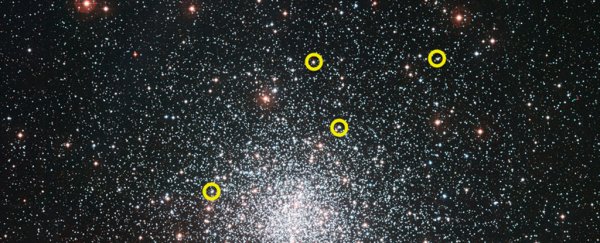The technology we use to peer out into deep space is becoming amazingly more powerful all the time, which means scientists are tapping into a constant stream of new discoveries and information from the Universe around us.
But few findings are as unusual and intriguing as this one: audio recordings have been made for the first time from a group of stars up to 13 billion years old. You can listen to them below.
As well as being a pretty trippy listening experience, the new tracks hold plenty of scientific value too.
Unlike light, sound can't travel through the vacuum of space, but researchers can get at certain types of audio through a technique known as asteroseismology: simply put, it measures the oscillations of distant stars, which appear to us as very small changes in brightness. These oscillations can then be converted into sound.
So what does it sound like? These recordings show the 'music' coming from each of the stars (keep listening, there are four haunting notes in total):
What we're hearing in these tracks is the sound 'trapped' inside the stars, which makes them resonate. The natural frequencies of these oscillations are too low for the human ear to hear, so they're then sped up, and the resulting 'music' can give us information about the mass and age of each star.
The recordings were put together by a team of researchers led by Andrea Miglio from the University of Birmingham in the UK. Miglio and his colleagues used data from NASA's Kepler missions to measure stars in the Milky Way's M4 cluster.
"We were thrilled to be able to listen to some of the stellar relics of the early Universe," said Miglio. "The stars we have studied really are living fossils from the time of the formation of our galaxy, and we now hope be able to unlock the secrets of how spiral galaxies, like our own, formed and evolved."
The researchers now intend to carry out some more 'galactic archaeology' to dig deeper into the past of the Milky Way, even back to its very early stages, which is what these stars represent.
The same technique used in this study can also be applied to many other stars in the same galaxy.
"The age scale of stars has so far been restricted to relatively young stars, limiting our ability to probe the early history of our galaxy," said Guy Davies, also of the University of Birmingham and the co-author of the study.
"In this research we have been able to prove that asteroseismology can give precise and accurate ages for the oldest stars in the galaxy."
The findings are published in Monthly Notices of the Royal Astronomical Society.
If you're on a desktop, you can also play around with exploring which sounds come from which stars over here.
